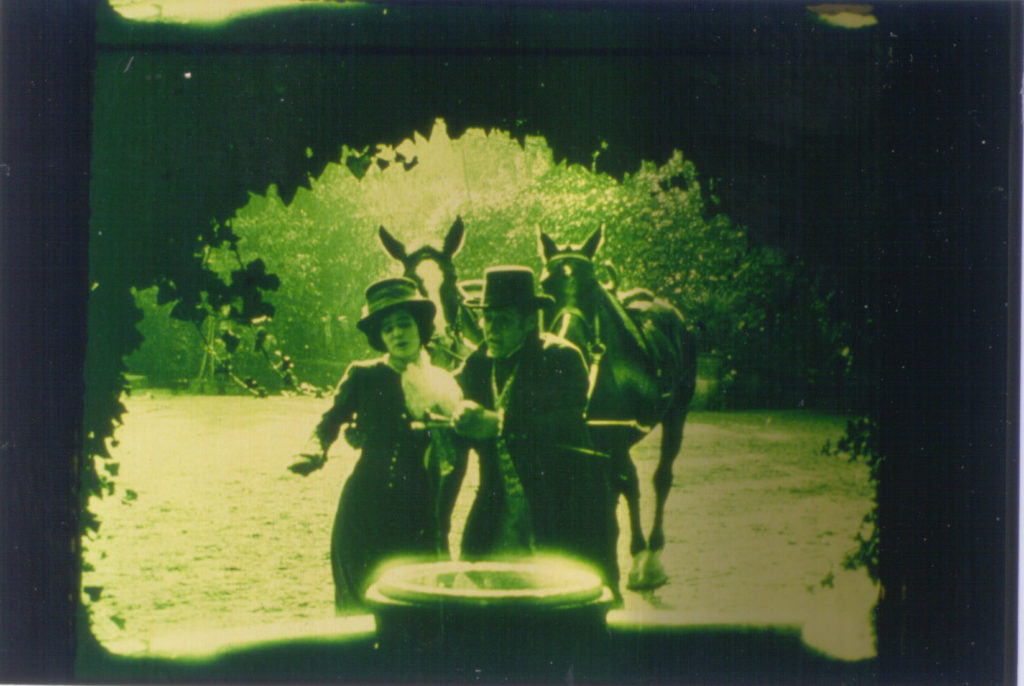Observatory on italian silent: film d’arte italiana 2002

Film d’Arte Italiana was founded in Rome on 2 March 1909. Considered as a sort of subsidiary of Pathé, FAI was specialized in making film d’arte, meaning films adapted from world famous literary and/or theater works, as well as historical films. Over the years, however, new genres were experimented, and in 1912-13, production of modern dramas and comedies set in modern times began, using scenarios written specifically for the cinema. The so-called «Cine-drammi», «psychological films» or bourgeois melodramas, became popular (Resto umano, 1913, Usuraio e padre, 1914, Il fantasma della felicità, 1915, La modella, 1916), but there was no lack of comedies either (Il figurinaio, 1913, Il sogno di Giacobbe, 1914, Effetti di luce, 1916, Papà mio, mi piaccion tutti!, 1918) ), as well as several «war» (Il bacio della Gloria, Armi e amori, 1913) and propaganda (Per la Patria!, 1915). The FAI production house gave numerous artists the opportunity to make their film debuts – think of Francesca Bertini, Ferruccio Garavaglia, Ermete Novelli, Vittoria Lepanto, Guido Brignone, Ettore Berti, Augusto Genina, etc. – though they would become famous only later. Among the main directors, two names come to mind for their loyalty to the production house: Ugo Falena and Gerolamo Lo Savio. In the beginning, they alternated indiscriminately between direction of dramas and period films; later, while Falena tested his skills in the making of bourgeois melodramas and comedies, Lo Savio began to work on the administrative side of «Film d’Arte Italiana», holding the position of Managing Director until 1918. In addition to the previously mentioned Falena and Lo Savio, Lucio d’Ambra became one of the main screenwriters, bringing us incredibly successful films, such as Effetti di luce, La chiamavano Cosetta (1917), Papà mio, mi piaccion tutti!. Linked to Pathé by a series of contracts – in which the French company was primarily committed to processing negatives and distributing the films worldwide – FAI went through a difficult period at the end of the war, and in 1918 was sold to attorney Mecheri who merged the company with Tiber Films. In 1919, FAI became part of the UCI, and was thus destined to share the same fate. Between 1909 and 1924, FAI made 165 films, one third of which were found at the Cinémathèque Française. Most of the material consists of original, unassembled nitrate negatives. During the Nineties, in collaboration with the French Archives, the Cineteca di Bologna undertook a project for conservation and restoration of the FAI collection, supported by Proiecto Lumière and MEDIA. The work, entrusted to L’Immagine Ritrovata, has led to restoration of fifteen films: Luisa Miller, Tristano e Isotta, La congiura dei Fieschi (1911); Un dramma a Firenze, La sedia del diavolo, Il falco rosso, I carbonari, Una congiura contro Murat, Dall’amore al disonore, La giustizia dell’abisso (1912); L’assalto fatale, Resto umano, L’onore del banchiere (1913), Usuraio e padre (1914); Effetti di luce (1916). For the Festival of Il Cinema Ritrovato 2002, another section of this project will begin, consisting in restoration of several films which are representative of the new direction taken by FAI, starting in 1912. Among these films are: Il ritratto dell’amata; (1912), I carbonari (1912), Il bacio della gloria (1913), Resto umano (1913).
Alessia Navantieri, Michele Canosa


